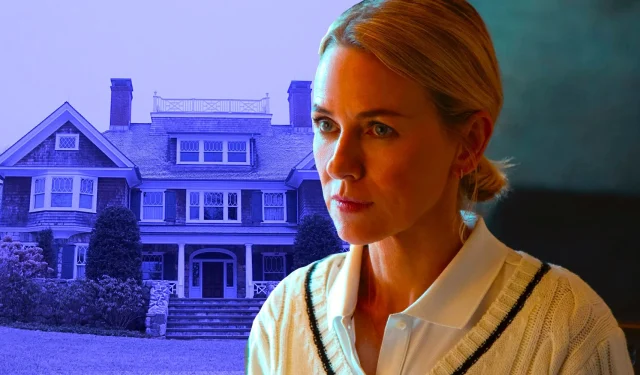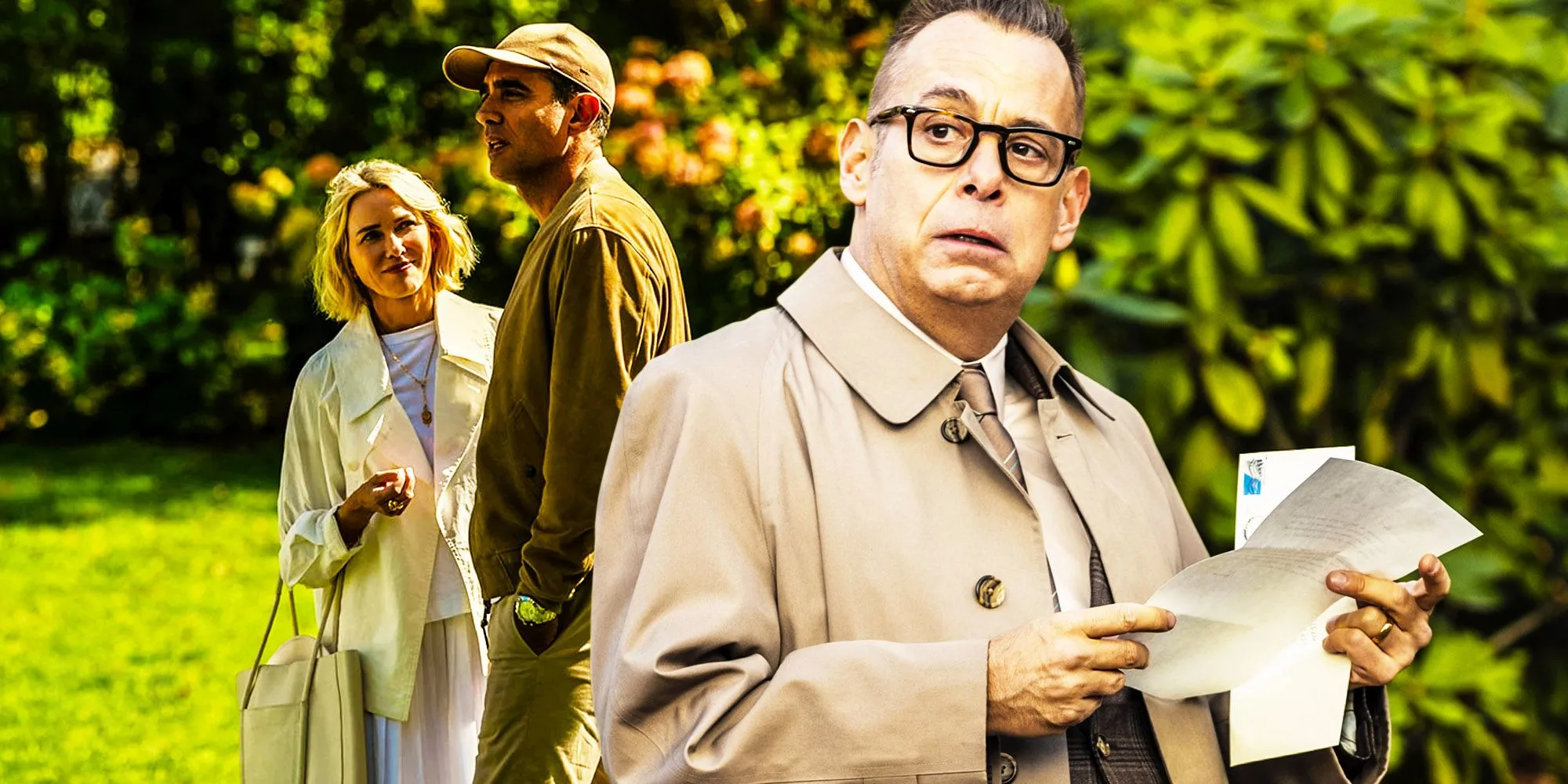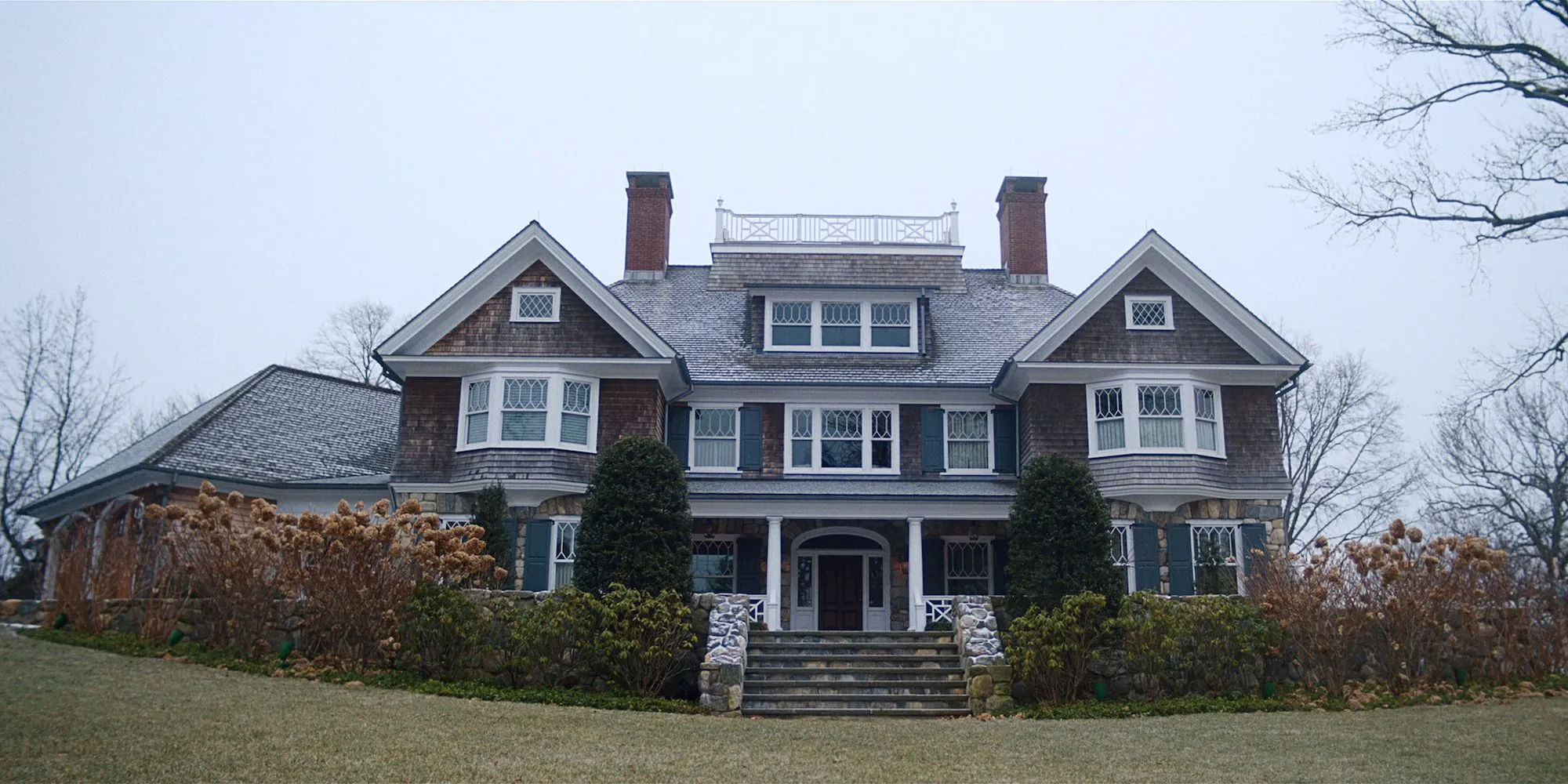
The conclusion of Netflix’s The Watcher has sparked significant debate among viewers, with many pondering its ambiguous ending. This miniseries, created by Ryan Murphy, draws inspiration from the true events surrounding 657 Boulevard in Westfield, New Jersey. The narrative follows Nora and Dean Braddock, portrayed by Naomi Watts and Bobby Cannavale, who relocate their family to this home, only to start receiving a series of ominous, anonymous letters warning against altering the property.
While The Watcher incorporates elements from the true story, it takes numerous creative liberties. Aside from the mysterious letters and the house’s location, the bulk of the plot is fictionalized. Ultimately, the series concludes without disclosing the letter-writer’s identity, maintaining fidelity to the real-life mystery, which remains unsolved even today.
What Happens in The Watcher’s Ending?
Revelation of Theodora as the Letter Sender

In the finale, Nora and Dean Braddock discover that their private investigator, Theodora, has been diagnosed with cancer. In a dramatic twist, Theodora confesses to sending the letters, revealing that she had once purchased 657 Boulevard as her dream home but was forced to sell due to financial strain following her husband’s death. To her surprise, she later discovered he had concealed over $1 million, allowing her to afford the house, which prompted her bizarre scheme to scare the Braddocks away.
Why Did Theodora Claim She Was The Watcher?
Seeking Closure for the Braddocks

Theodora further explains that she had orchestrated events, including hiring actors to portray the mysterious pig-tailed figure seen in the Braddocks’ bedroom, all to reclaim her home. However, during her funeral, her daughter disputes these claims, and the Braddocks learn from neighbor Mo (played by Margo Martindale) that Theodora never actually lived at 657 Boulevard.
The series concludes with a dark revelation: Theodora may have fabricated her confession to provide closure to the Braddocks, as her investigation failed to uncover the real tormentor behind the letters.
What Happened to Karen in 657 Boulevard?
Karen Turns Out to be Innocent

As the plot unfolds, realtor Karen (Jennifer Coolidge) emerges as a prime suspect after Theodora is exonerated. Karen had been vocal about her desire for 657 Boulevard, leading many to speculate she could be linked to the sinister letters. Her profession gave her insider knowledge about the house’s features, potentially using them to terrorize the Braddocks.
Nonetheless, her character is ultimately vindicated when she suffers a traumatic experience herself. Following the Braddocks’ departure, Karen’s short time in the house is marked by a masked figure pursuing her, establishing that she, too, became a victim of the house’s dark history.
Was John Graff a Real Person?
John Graff is a Fictional Character Inspired by a True Murderer

Although John Graff appears prominently in the narrative, he is a fictional character based on the notorious real-life criminal John List, who tragically murdered his family in Westfield, New Jersey. However, Graff bears no actual ties to the 657 Boulevard case, serving instead to evoke comparisons between real true-crime stories and fictional horror narratives like The Amityville Horror.
Does Dean Braddock Become the Watcher?
Too Great a Deviation for Dean to Become the Villain

Dean’s obsession with uncovering the identity of the Watcher and protecting his family causes strain in his marriage with Nora. This suspenseful buildup echoes the experiences of characters like Jack Torrance in The Shining, as Dean’s mental state deteriorates throughout the series. Much like those iconic figures, Dean is drawn back to the house, showcasing his inability to escape the shadow of their experience.
However, the series remains anchored in reality. The actual individuals involved in the case were never implicated in posing a threat to subsequent homeowners. This important detail prevents Dean from being established as the folklore’s villain, keeping the moral boundaries in check despite the show’s fictional twists.
The True Meaning Behind The Watcher’s Ending
A Commentary on the Power of Paranoia

The Watcher’s conclusion diverges from the formulaic endings typical of many Netflix series, culminating in an unresolved case that resonates with the true story’s ongoing mystery. This lack of closure reinforces the themes of fear and mistrust within communities. It explores how anonymity can weave threads of paranoia through the social fabric of suburban life.
The Watcher adeptly casts suspicion on virtually all its characters, leaving audiences with an unsettling reminder that the true nature of the Watcher—like many societal fears—remains ambiguous and potentially the most frightening revelation of all.
The Watcher: A Setup for Season 2
Anticipating Season 2’s Story Direction

Despite being marketed as a miniseries, Netflix has confirmed a second season of The Watcher. The finale’s ambiguity leaves viewers speculating about future plot developments. There are numerous threads to explore, particularly Dean’s mental unraveling and his preoccupation with the house and its previous owners’ fates.
Moreover, Karen’s storyline. After her unsettling experience in the house, it begs the question of the lingering presence of the real Watcher. She remains a pivotal character, and Dean’s pursuit of the truth could serve as a primary plot point moving forward.
Alternatively, season 2 may pivot towards an anthology format, focusing on a separate account of suburban horror rather than continuing the Braddock family’s narrative. While specific details around the next season are scarce, indications suggest it could unravel more stories blending true crime with fiction.
Audience Reactions to The Watcher Ending
Mixed Responses from Viewers

Viewers often desire resolution in single-season narratives, yet The Watcher’s ending fell short of providing a satisfying closure.
Despite the show’s foundation in real-life ambiguity, many true crime enthusiasts expressed a hope for a clearer conclusion. Critics such as Evan Romano from Men’s Health remarked on the unsettling impact of the ending, while numerous viewers felt let down. One Reddit discussion labeled it disappointing, with sentiments ranging from “underwhelming” to “trash.” The Independent gathered several audience reactions highlighting the widespread dissatisfaction with the show’s resolution.
In today’s era of television, where many series face cancellation after a single season, viewers increasingly crave closure in storytelling, making the lack of a definitive ending in The Watcher particularly frustrating.
Reflections from the Cast on The Watcher Ending

The cast’s commentary provides valuable insights into the ambiguous nature of The Watcher’s conclusion. Naomi Watts and Bobby Cannavale have shared their interpretations, elucidating the narrative’s thematic underpinnings.
Bobby Cannavale emphasizes the significance of keeping the Watcher’s identity concealed, as it enhances the sense of dread, making the audience aware that “everybody can be a suspect.” He acknowledges the mixed feelings expressed by the audience but believes the lack of clarity serves a larger purpose:
“That sense of paranoia has seeped in. You just never know. Everybody can be a suspect. Even the person you love most can be the person you need to be careful of.”
Naomi Watts resonates with this sentiment, highlighting that the family’s emotional journey and societal commentary outweigh the mystery itself. She offers a deeper analysis of the underlying themes at play:
“They feel like the house is going to solve their problems, and it ends up being the catalyst that causes a whole lot of new problems that they didn’t anticipate… It’s a vicious cycle.”
Leave a Reply